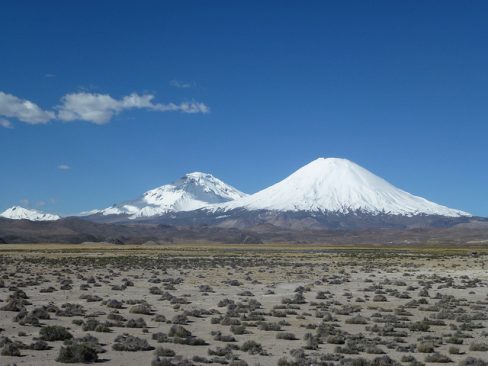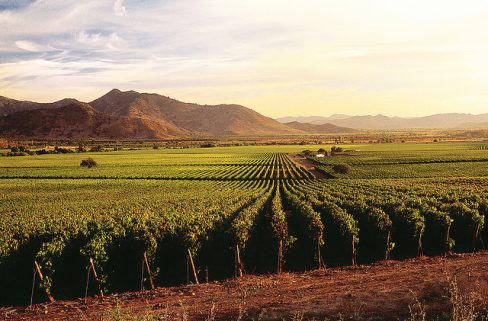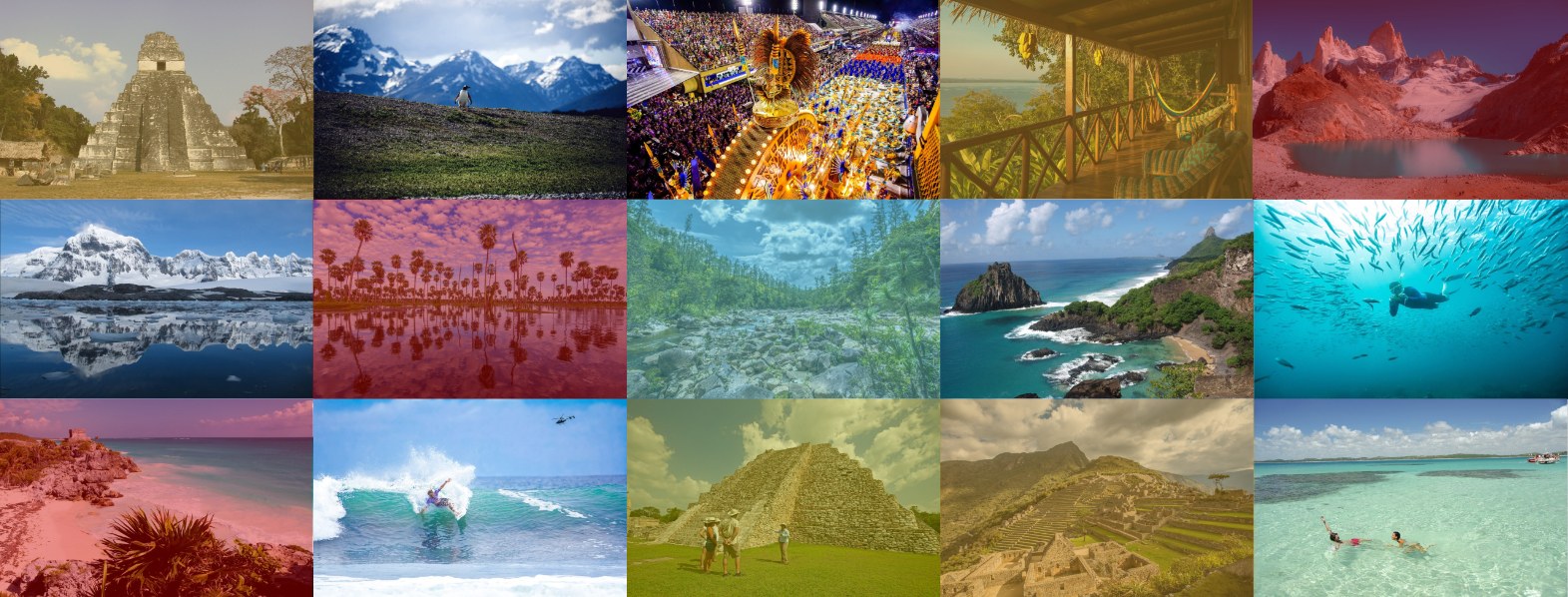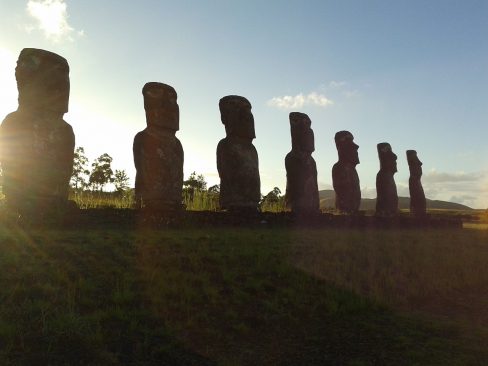Chile is spectacular although often overlooked as a Latin American destination. It is however rising in popularity so we thought it was time to but a handy guide together for 8 incredible mini-journeys you can take in the country from the dry northern desert of Atacama to the snow-capped mountains and peaks of Torres del Paine and the mysterious Polynesian island Easter Island. Many of these can be combined to make much larger itineraries.

1. Arica to Lauca
Out of all of Chile’s destinations, this is perhaps the most overlooked. However, this isolated region of Northern Chile located near the borders of Peru and Bolivia have much to offer. Begin in the coastal town of Arica, easily reachable from a direct flight from Santiago. This small city has a wonderfully warm climate all year round. As well as good quality beaches, it also has some of the best surf available in the country. From here you can visit the Azapa Valley from which you can see some ancient mummies. Just a couple of hours by road inland lies the Lauca National Park located in the Central Andean dry puna ecoregion. Between 3,300 and 6,300 metres above sea level it won’t just be the scenery that leaves you feeling breathless. Hiking is the best way to see this national park. Along the way there are plenty of opportunities to see llamas, guanacos, vicuñas and maybe even cougars. There are plenty of bird species including Andean goose, Chilean flamingos and Andean condors to name just a few.

2. Atacama to Altiplano
What the Northern desert of Atacama lacks in flora (although there are some regions towards the coast that have colourful wild desert flowers) it certainly makes up for in landscapes. Most base themselves at in the small town of San Pedro de Atacama. There are plenty of places to stay from budget to seriously luxurious. From here take day trips out into the wilderness. Must see places include Moon and Death Valley whose landscapes have been compared to Mars (in fact is has been used for as a location for many films) and is best seen during the evening when you watch the famous sunset. The geyser field of El Tatio does require an early start but doesn’t disappoint. Over 80 geysers shooting steam up to 6 metres high make this the largest geyser field in the southern hemisphere. Although the Atacama salt flats are not as large as the Uyuni salt flats in Bolivia, they are no less impressive. Lastly a visit to Miscanti and Miñique lagoons in the high Altiplano in Los Flamencos National Reserve reveal some fantastic wildlife including Chilean flamingos (hence the name).

3. Santiago to Valparaiso
The capital of Santiago is the entrance point to Chile for most and is well worth a few days. The district of Recoleta has a large variety of luxury and boutique hotels from which to base yourself. A guided tour from a local is one of the best ways to see the city and usually include visits to the Recoleta cemetery where Eva Peron is buried, Santa Lucia Hill, the Cathedral and Plaza de Armas. There are plenty of excellent restaurants and the nightlife is as good as Buenos Aires’. After you’ve had your fill of Santiago head East to the port city of Valpairaiso a journey of around two hours. This colourful, gritty port city has had a resurgence in recent years, many spending more time here than the capital. The UNESCO World Heritage historic quarter is a fine example of 9th century of urban development in Latin America.

4. Wine tasting in Rosario
From Santiago head to the Rosario Valley region located between Casablanca and San Antonio, one of the world’s best wine growing regions. This 9,000 hectare enclosed valley has the ideal climate and topographic conditions for red and white wines. This spring-like climate makes it an ideal place to stay, even in the height of summer. Spend four nights at the seriously comfortable Matetic vineyards. Spend each day hiking, horse riding or biking through the beautiful countryside whilst enjoying superb cuisine, of coursed paired with excellent wines. As well as activities and wine there is also much flora and wildlife to be seen in the area. The dry coastal zone makes it perfect for wild flowers like the red Chilean bellflowers and there are plenty of mammals such as foxes and birdlife including thrushes, birds of prey and parrots.

5. Lake District, Pucon to Puerto Varas
The Lake District is located about half way from Santiago to the very south, between Temuco and Puerto Montt. This area is rich in forests, volcanos and of course, lakes. Popular with German, Swiss and Austrian immigrants in the 19th century was probably due to its similarity to the Alpine region of Europe. After flying to Temuco from Santiago transfer to Pucon. The town sits right on the edge of Villarrica Lake and Villarrica Volcano. It’s one of the hot spots of adventure sports in the country, so as well as hiking, there is plenty of kayaking, rafting, horse riding, canyoning and climbing. In the winter it’s also an excellent place for skiing and snowboarding. Head further south to Puerto Varas, another adventure sport playground, but somewhat quieter than Pucon. Towering over the town are Osorno and Calbuco volcanoes. Here you can fish, hiking, ski and climb. We recommend taking a guided tour of Osorno and visiting some of the local hot springs.

6. Lake Crossing to Argentina
The lake crossing between Chile and Argentina is certainly a more scenic way to cross the border. Beginning in Puerto Varas you will be transferred to Petrohue bordering Lake Llanquihue. Along the way take in the impressive sights of Osorno and Calbuco Volcanoes. Visit the impressive Petrohue Falls in Vicentre Perez National Park. Set sail to Peulla crossing over Todos los Santos Lake. Once you arrive take some time to relax and enjoy lunch before boarding a bus to Puerto Frias passing through the border. Arrive and take your second board across Lake Frias before boarding bus to Puerto Blest. Here you will take your last boat navigation across Puerto Nahuel Huapi Lake arrive in Puerto Pañuelo where you will continue by bus to Bariloche.
7. Torres del Paine
After flying into Punta Arenas and travelling through the town of Puerto Natales, you’ll reach the spectacular Torres del Paine National Park. Located in the far south in the heart of Patagonia between the Magellanic subpolar forests and the Patagonia Steppes, this is truly one of our favourite places in Latin America (if not the world). There are just a handful of places to stay within the national park. For luxurious glamping try the EcoCamp that is not only located in a fantastic location but provides easy access to some of the best trails and makes for a very comfortable base. Although horse riding and biking can be arranged, the best way to see the park is by foot, either with days trips, or on the five day W Trek staying in refuges or camping. Taking a boat trip to Balmaceda and Serrano Glaciers will not leave you disappointed and is included on most trips to the region.
8. Easter Island
One of the most remote islands in the world. The six hour flight from Santiago puts many of visiting this Polynesian Island, but those who make the long journey are treated to interesting scenery, a culture very different from that of mainland Chile and some of the most mysterious histories on earth. It’s most famous for the 887 Moai statues created by the early Rapa Nui people who to begin with thrived on the island, but overpopulation, the introduction of rats and extensive deforestation severely reduced the Rapa Nui’s community. Excellent local guides will help you discover about the fascinating history of the Rapa Nui as well as offering excellent hiking and horse riding. There are also plenty of tropical white sandy beaches to relax on.
To start arranging your bespoke tour of Chile do get in touch with us or take a look at some of our example tours.
RELATED: 5 Natural Wonders You Can See In Chile’s Atacama Desert



